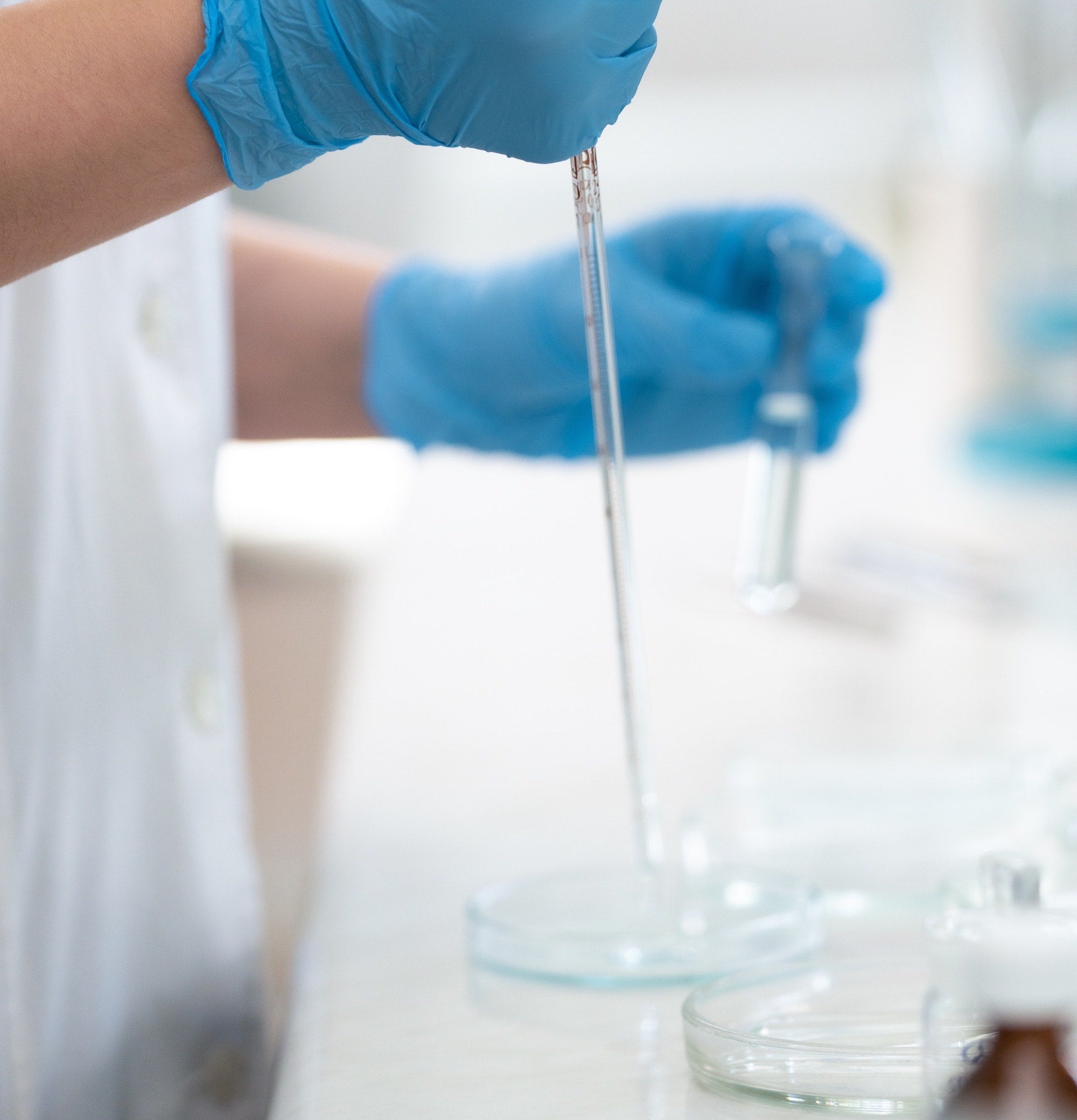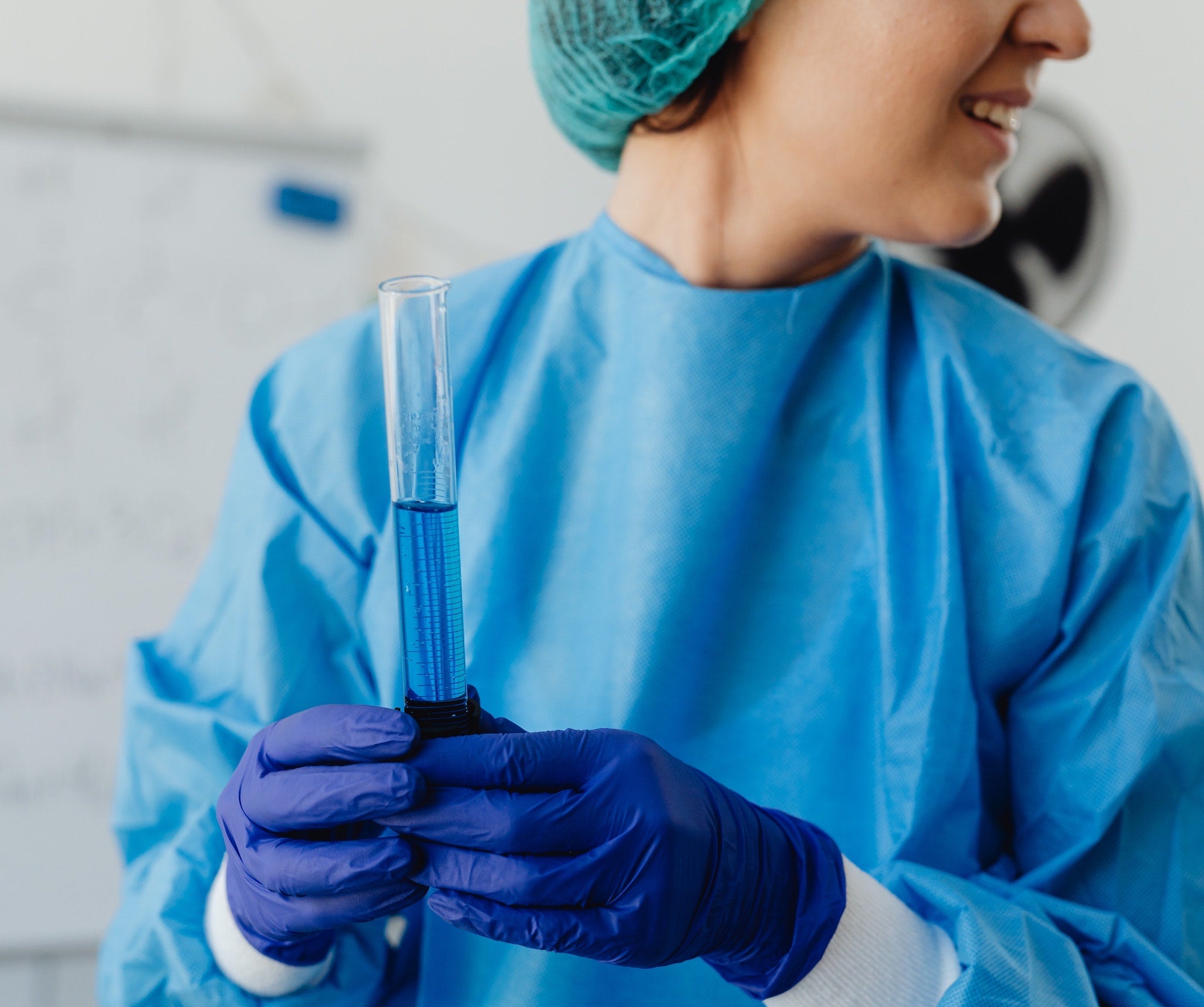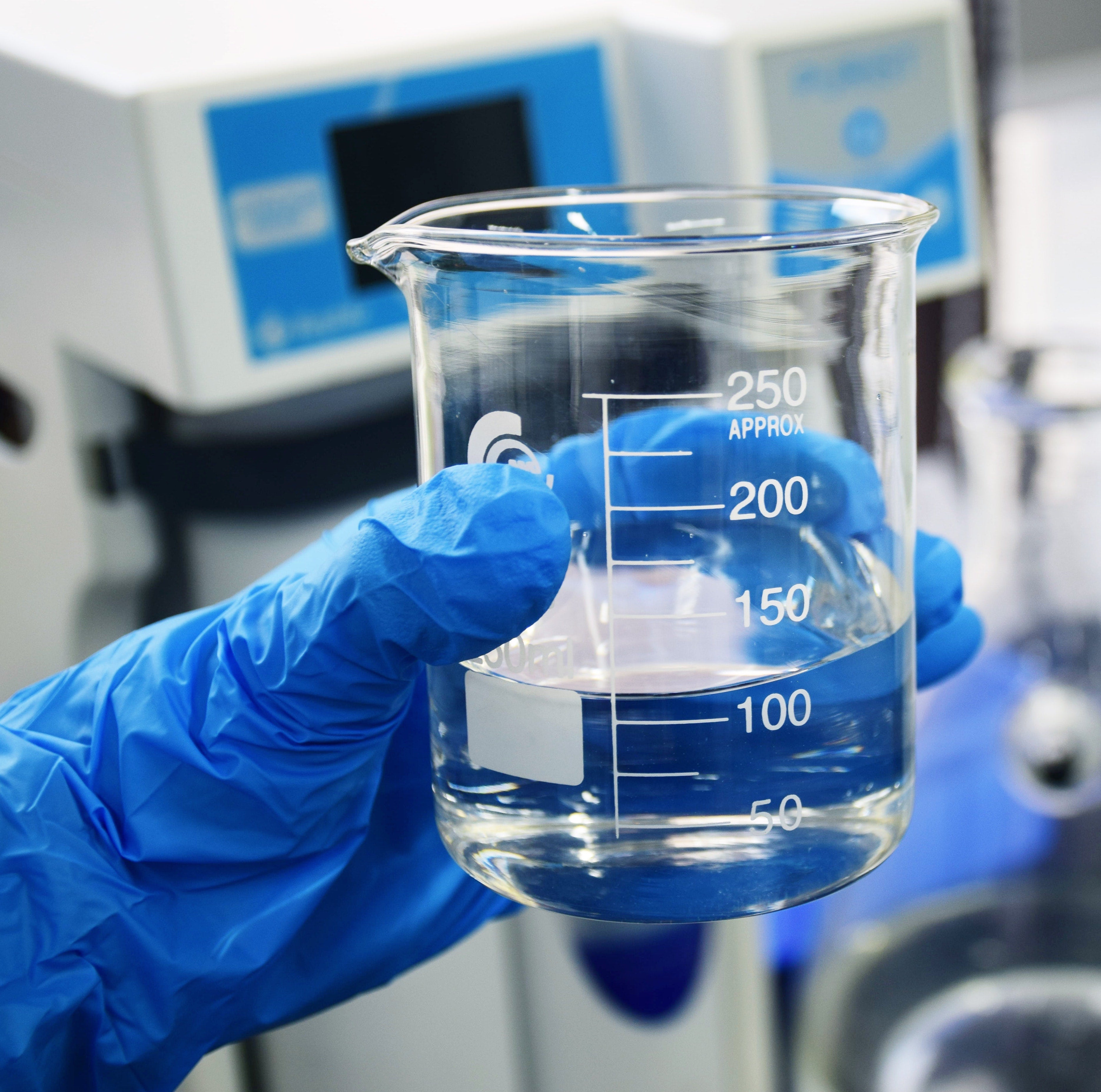
Water Activity (aw) Test
To grow, all things need food and water. Without water, life does not exist. One molecule of water is composed of two hydrogen atoms bonded with one oxygen atom. Water is required by all cells to:
- Transport oxygen, nutrients, and wastes,
- Support DNA and protein cell structure, and
- Buffer drastic changes in pH levels.
Water’s molecular structure with one positively charged side and one negatively charged side allows water to bond with other asymmetrically charged molecules to do things like support cell structure. In the case of ‘free water’ or unbonded water, the asymmetric charge breaks up or dissolves bonded polar molecules of another substance. Thus water, the universal solvent, also acts as a transportation network.
Water Activity (aw)
Total water or moisture content is how much bonded and unbonded water is in a product.
Free water or the water activity level (aw) is the amount of water not bound with other non-water molecules. Only unbonded water is free to migrate throughout a substance to engage in chemical reactions or provide microorganism growth. The aw of food products, dietary supplements, or cosmetics determines if there is enough water to support the growth of harmful microorganisms.
The US Food and Drug Administration (FDA) defines aw as the ratio of a product’s vapor pressure to the vapor pressure of distilled or pure water. (The vapor pressure of the product and the distilled water must be taken in identical conditions for the ratio to be valid.)
For pure water, the aw level is 1.0. When expressed as a decimal, the product’s vapor pressure ratio is called its aw level. When expressed as a percentage, this ratio is called the equilibrium relative humidity (ERH). The ERH of pure water is 100%.
aw Levels to Prevent Microbial Spoilage
Since unbonded water supports the growth of microorganisms, the stability or shelf life of food, dietary supplements, or cosmetics is partially determined by the amount of free water in a product. (Microbial growth also depends on temperature and pH levels).
The aw level may rise or fall as the temperature increases. However, the aw level of most substances with high moisture content is not temperature-dependent.
Most fresh foods (meat, fish, dairy, produce, and bread) have an aw above 0.95 that supports the microbial growth of bacteria, yeasts, and molds. Most bacteria cannot grow below a 0.90 aw level. However, there are a couple of outliers, including the bacteria Staphylococcus aureus (0.86). Hence, products with an aw 0.85 or higher are subject to additional good manufacturing practices (GMP) per 21 CFR Parts 108, 113, and 114.
Products, including many canned foods, with an aw below 0.85 significantly reduce harmful and toxic microorganism growth by reducing the amount of free water. These products are not subject to GMPs outlined in 21 CFR Parts 108, 113, and 114. Water activity levels can be controlled by binding free water with salts, sugars, or packaging with a desiccant.
An aw level between 0.85 and 0.75 can support the growth of various yeasts and molds and very few bacteria, including the halophilic bacterium in salty conditions. An aw below 0.60 cannot support microorganism growth. (aw levels required for the growth of various microorganisms tabulated by the 2US Pharmaceutical Convention.)
Water Activity Laboratory Testing
In an aw test, the free water inside a product evaporates until it reaches equilibrium. Since measuring the water activity of food, dietary supplements, or cosmetic products is temperature-dependent, testing requires strict temperature control. There are three methods used to identify the aw level.
1. Chilled Mirror Dew-Point Method
The product sample is placed in a tightly enclosed area with a small headspace. Dew forms inside the enclosed area, indicating the water vapor saturation point. Once equilibrium is reached between the water in the sample and the water vapor in the headspace, the vapor pressure is measured with a relative humidity sensor called a hygrometer.
Several types of water activity meters are commercially available including electric hygrometers, psychrometers, dew-point hygrometers, and more.
A temperature-controlled mirror on the ceiling of the enclosed area makes it possible to determine the exact dew point when the rate of dew condensation equals the rate of dew evaporation. The chilled mirror dew-point method provides accurate aw measurement in about five minutes.
2. Constant Humidity Atmospheres
In this method, the product sample is exposed to saturated salt solutions to promote various but constant humidity conditions. Since free water readily binds with salt, the free water content can be determined by weight using a gravimeter once equilibrium is reached.
3. Capacitance
Volatile compounds evaporate and interfere with dew-point measurement methods. If the product contains volatile compounds, the aw is measured based on the product's ability to hold an electric charge by a capacitance sensor. This method is not as accurate as the dew-point method.
Purposes for Conducting Water Activity Testing
Why have your food, dietary supplements, or cosmetics aw tested? Testing for your products' water activity level is simple, fast, and informative. It is a litmus test that protects your product and your interests. It can help you:
1. Prevent Spoilage from Microbial Growth
Knowing a product’s aw level helps determine storage requirements to prevent microbial growth. And it can also help determine mitigating factors to drop the ERH, including adding salt, sugar, or desiccants.
2. Reduce Crystallization (Clumping)
Product clumping is undesirable for consumers. Knowing the aw helps owners determine the possibility and timing of product clumping.
3. Determine Microorganism Testing Frequency
Laboratory testing is a necessary expense that protects public safety. However, conducting unnecessary tests adds costs to the final product. Knowing a product’s aw helps owners determine the appropriate laboratory tests and testing frequency for their product. Products with lower aw can space out or reduce the frequency of microorganism testing.
CTLA Testing
CTLA is a full-service food, dietary supplements, and cosmetics testing laboratory. We conduct aw testing to provide clients with detailed information for their product. Water activity testing helps determine best practices for product manufacturing, storage, shelf-life, and testing frequency.
To receive a quote, contact us today.

Article by Jae O. Haroldsen
The content of CTLA’s website is for information only, not advice or guarantee of outcome. Information is gathered and shared from reputable sources; however, CTLA is not responsible for errors or omissions in reporting or explanation. CTLA gives no assurance or warranty regarding the accuracy, timeliness or applicability of the content.
Sources
“Water Activity (AW) in Foods.” Food and Drug Administration. 2014. https://www.fda.gov/inspections-compliance-enforcement-and-criminal-investigations/inspection-technical-guides/water-activity-aw-foods“Application of Water Activity Determination to Nonsterile Pharmaceutical Products.” US Pharmaceutical Convention. 2021.
Fontana J, Anthony. “Dew-Point Method for the Determination of Water Activity.” Current Protocols. 2001. https://currentprotocols.onlinelibrary.wiley.com/doi/abs/10.1002/0471142913.faa0202s00
“Water Activity Definitions.” Neu-tec Group. https://neutecgroup.com/info/e-learning-center/75-what-is-water-activity
“Water Activity Testing.” Consumer Product Testing Company. https://cptclabs.com/water-activity-testing/
Sargen, Molly. “Biological Roles of Water: Why is Water Necessary for Life.” Harvard University. 2019. https://sitn.hms.harvard.edu/uncategorized/2019/biological-roles-of-water-why-is-water-necessary-for-life/
“How Water Activity Relates to Microbial Growth.” Food Crumbles. 2020. https://foodcrumbles.com/water-activity-food-spoilage-microbial-growth/







